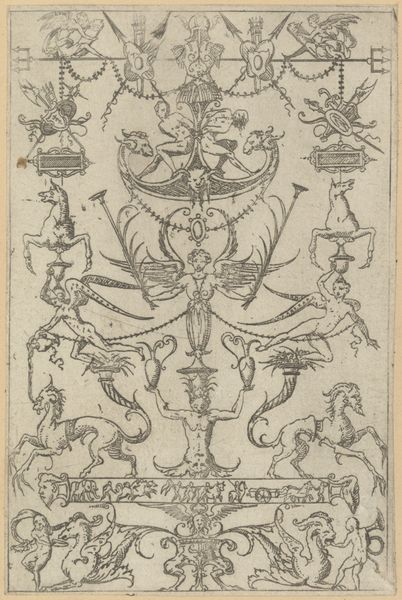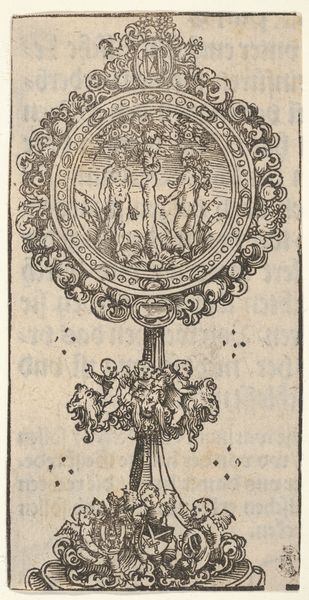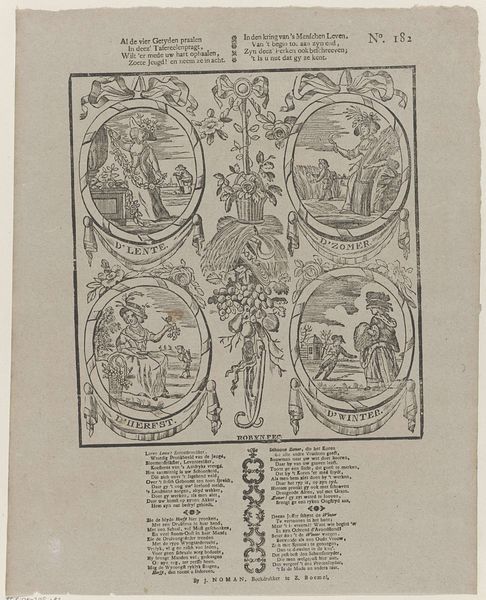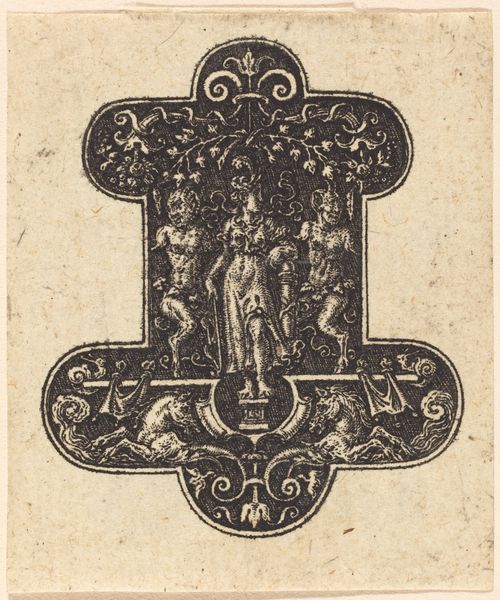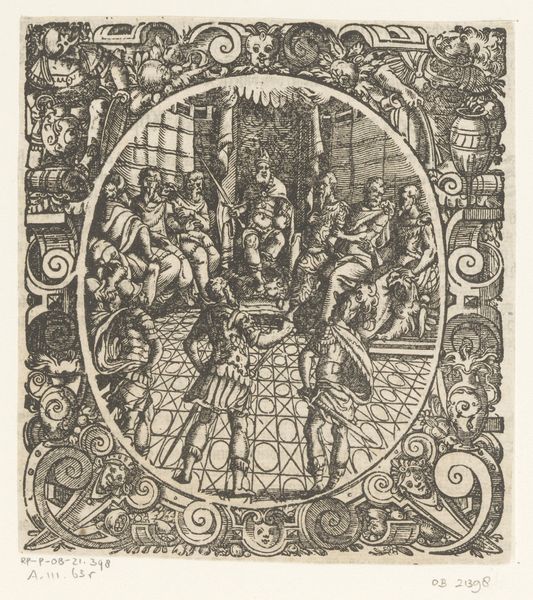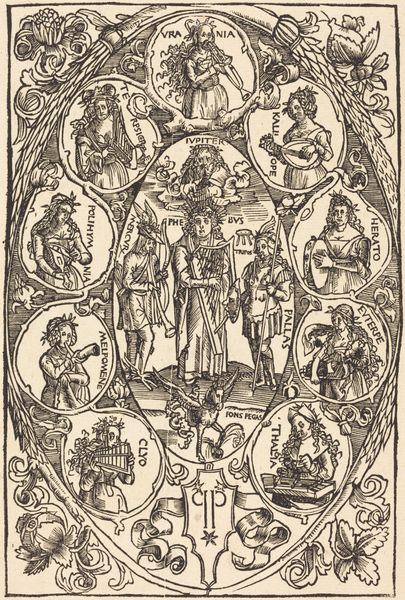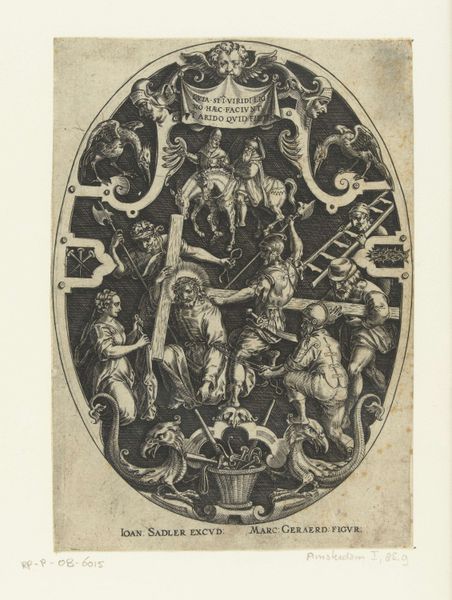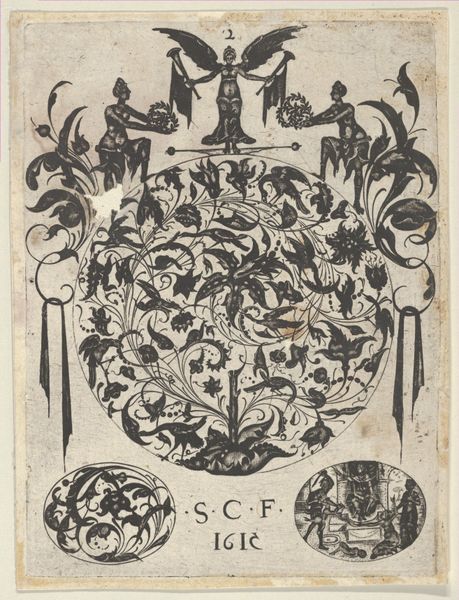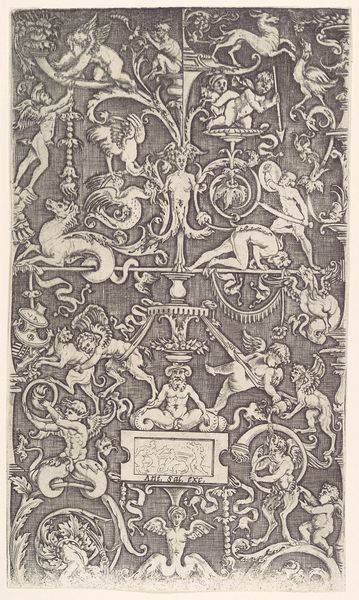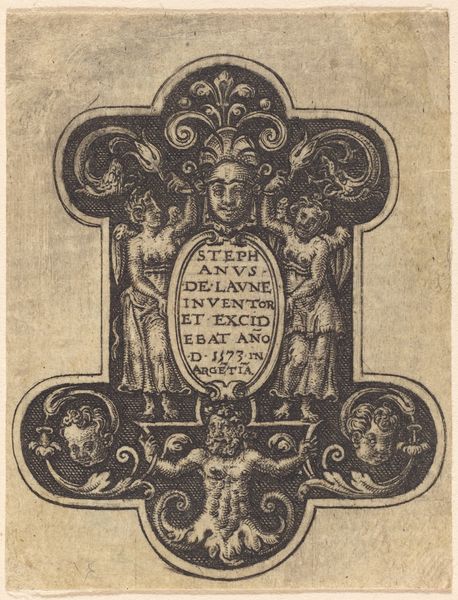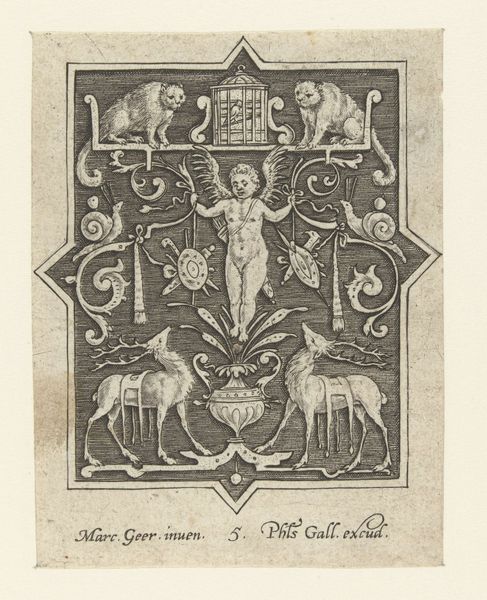
Dimensions: sheet: 5 7/8 x 4 11/16 in. (14.9 x 11.9 cm)
Copyright: Public Domain
Editor: This is Albrecht Durer’s "The Book Plate of Wilibald Pirckheimer," created sometime between 1485 and 1528. It's a woodcut or engraving. The composition seems so incredibly dense with detail. What is your interpretation of the imagery, its meaning, or perhaps its structure? Curator: Let us consider the internal relationships of this complex composition. Notice first the strong symmetry. The central shield is flanked by cherubic figures. The upper register balances against the lower through contrasting forms and figures in the frieze above and below the titular phrase. Even the seemingly organic wreath along the sides, replete with monstrous figures and serpentine coils, echoes itself from left to right. Editor: So the balance is a core component here. It creates, almost, a kind of tension within such busy imagery. Are there elements that disrupt that symmetry or formal construction? Curator: Indeed. Observe the slight variations within the seemingly mirrored halves of the central crest, including differing shapes within and figures supporting each half of the armorial shield. Consider the dynamic energy in the bottom register where figures confront each other, poised to disrupt an otherwise stable surface. Editor: That makes sense, that it's not just pure balance. Looking at the piece structurally highlights those areas of controlled asymmetry, it really deepens how one appreciates its complexity. Thanks. Curator: Indeed, I concur. Attention to details, internal relationships, and overall formal dynamics are invaluable for any interpreter of works of art, at any stage of learning.
Comments
No comments
Be the first to comment and join the conversation on the ultimate creative platform.
